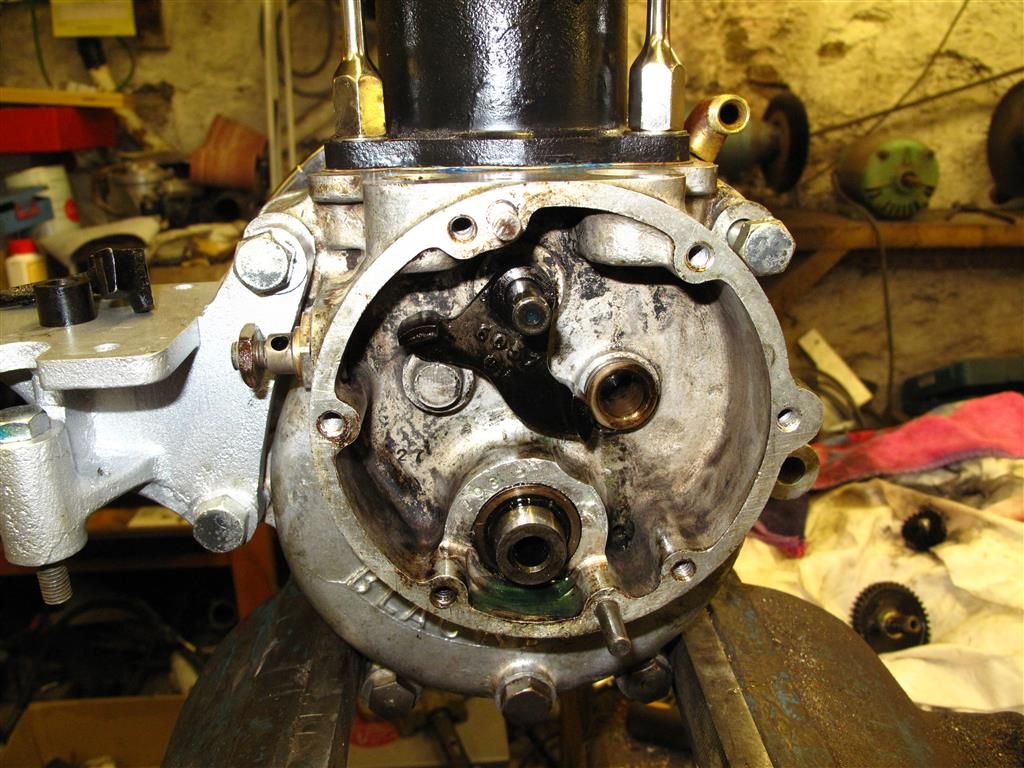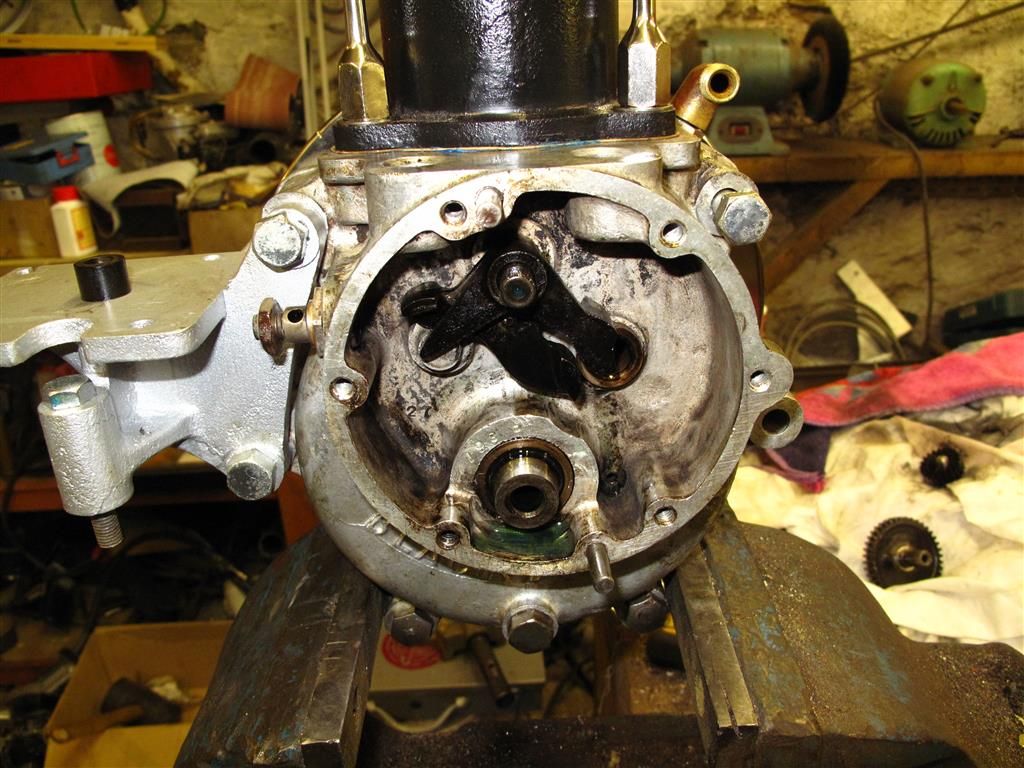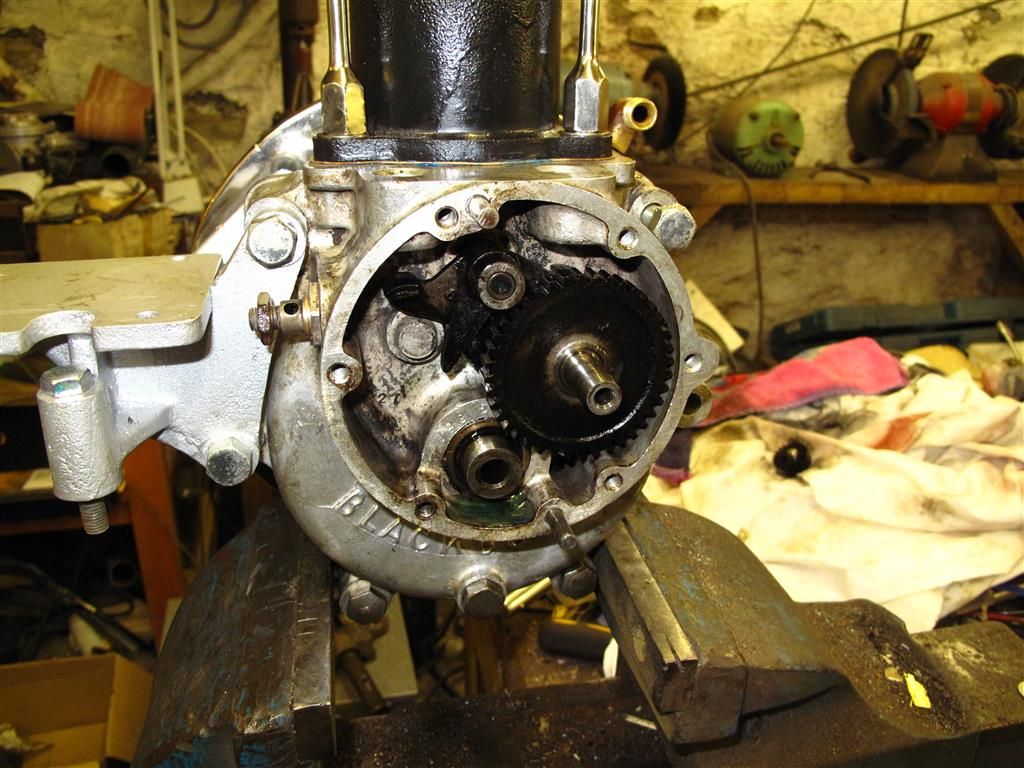The two valves need to open at a given rotation, one after the other, x degrees apart. Once your timing is selected, mark out on the cam gear the two opening positions, and arrange the two bell-cranks so that the followers start to rise on the cam, one for the first angle, and then x degrees later the other follower starts.
If I was designing from scratch I would make a cardboard (etc) disc to represent the half-speed gear, centred on a drawing pin, and mark on it the required opening and closing positions. Then I would play with various options (eg one pivot or two, etc) until I arrived at a pair of followers which give the desired timing. It would help, as you are starting from scratch, to make the gear with a keyway, and a spindle with a matchning longer keyway to fit, and then the two cams to the same profile to fit the spindle, but no keyway yet. Then you can position each cam where you think it should go, and turn the engine slowly to check where the valves lift and close. You can do each cam separately to avoid confusion, but be sure to mark each cam so that you always get them in the desired position and the desired way round. When you are sure you have it right, mark each keyway position and cut the slots.
As regards the 'best' timing for your engine, it depends a lot on what you want to use it for. Look at the timing details for a range of full-size engines, and you will find a big difference between lawn mowers, designed to slog all day, and racing machines, designed to go flat out for short periods. And the further back in time you go, the slower and steadier the engines are, with smaller angles of 'overlap'.
Hope this gets you going
Cheers, Tim
Ian Parkin.








